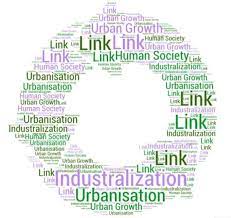Industrialization and Urbanization
Course Description:
This semester long course explores the evolution of technology, job specialization, and the growth of cities from the ancient world to the present day. Students will examine the phenomena of civilization and urbanization from the ancient to the modern world by studying a variety of civilizations throughout history, examining how and why cities grow, how this is the result of and how it can lead to technological, political, and economic innovation, and how industrial, economic, and demographic growth can lead to changing relationships and expectations as well as internal, regional, and international conflict and cooperation.

Data and graphs, print art and film, correspondence and diary, cartoon and photograph; the closer to the present we get in history, the more varied the artifacts we have to investigate the past become. Much of this class will build on ideas from last semester including story telling and bias, how do we know what we know?, the role of migration in making the world ever-changingly different. Where before we looked at cultural diffusion and its role in making new blends, the story now becomes one of truly global interaction:
When I bought my first iPhone, "Designed in California, Assembled in China", I was able to watch it ship from Shenzhen, China, through Chad Lap Kok, Hong Kong on to Inchon South Korea, Anchorage Alaska, Louisville, Kentucky, and then Williamstown, Massachusetts. It arrived at my house in less than a week.
With the global population reaching 8 billion with over half in urban settings, the affairs of the world are more linked and dependent on one another than ever. Ships stuck in the Suez Canal disrupting the supply chain to the tune of hundreds of millions of dollars per hour; Russian aggression on the Ukrainian border resulting in multiple nations troops being put on alert for potential travel half-way across the planet in a show of force; Pandemics that can be tracked near real time as waves move from nation to nation on the backs (or in the lungs) of millions of global travelers. It is more critical for us to be informed about the world around us than ever before. And despite the ways the world has become interconnected (and is therefore vulnerable to new challenges), humanity has never had it so good as the present. We'll make the case for this bold statement by the end of the course.
Course Outline:
Japan: A Case Study in Rapid Industrialization in the 1800s
- Agricultural (Pre-Industiral) Japan
- Japan 1852: Matthew Perry Arrives: Attention to the details.
- 20th Century Japan
How Industrialization Impacts People:
- Responses to European Industrialization
- Transition to Modern Times: A Postscript from the Depression
Modern Times:
- Industrialization and the Global Economy
- The World Is a Better Place
Haphazard 无为 and 朴
Chaotic action (through non-action) and the unlimited potential of the uncarved block. Who knows? Click. :)
About Brother Pete
Father, Teacher, Advisor, WebMaster, Firefighter, Brother, and Friend...
